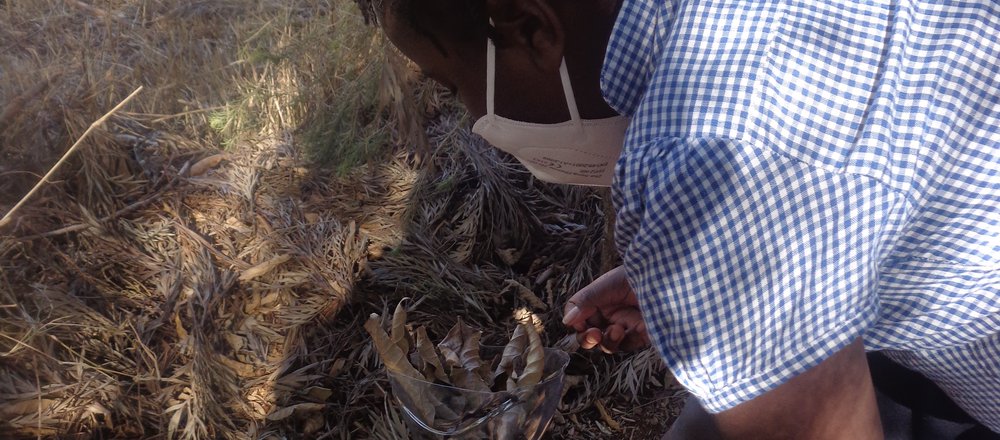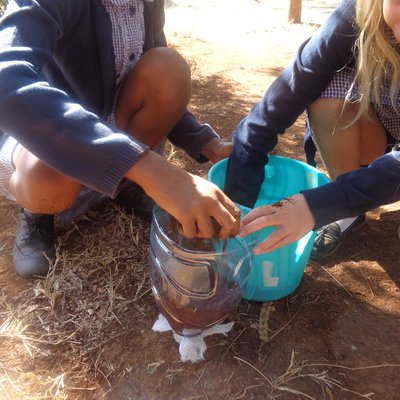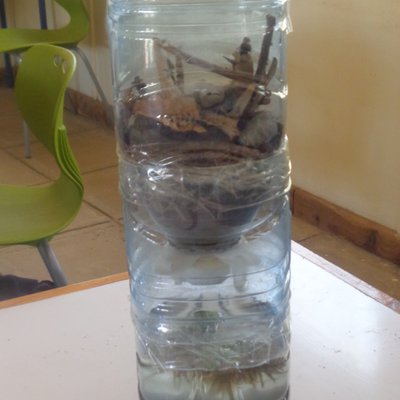Mini Ecosystems

25th March 2022
Children in Year 5 have been enjoying an especially fun science unit this block, learning all about plants and animals; they have been learning about life cycles and reproduction and have been lucky enough to conduct several hands-on experiments in order to further their understanding.
One of the children’s most exciting experiments of late was definitely when we made our own class ecosystems! These small habitats show perfectly how plants and animals work together to not just survive but thrive alongside one another.
The bottom layer of these ecosystems contain fish and snails with some plants and algae to eat; the top layer is soil, plants and dry leaves, filled with crickets, spiders and worms. As it is all connected and sealed off from the outside world, the water is evaporating from the fish layer, which is watering the plants in the top layer. The plants are producing oxygen for the fish and insects to survive while the fish provide carbon dioxide to help the plants grow for the bugs to eat up top.
This project has helped the children grasp how everything in our environment works together and just how important plants and trees are for our survival!




